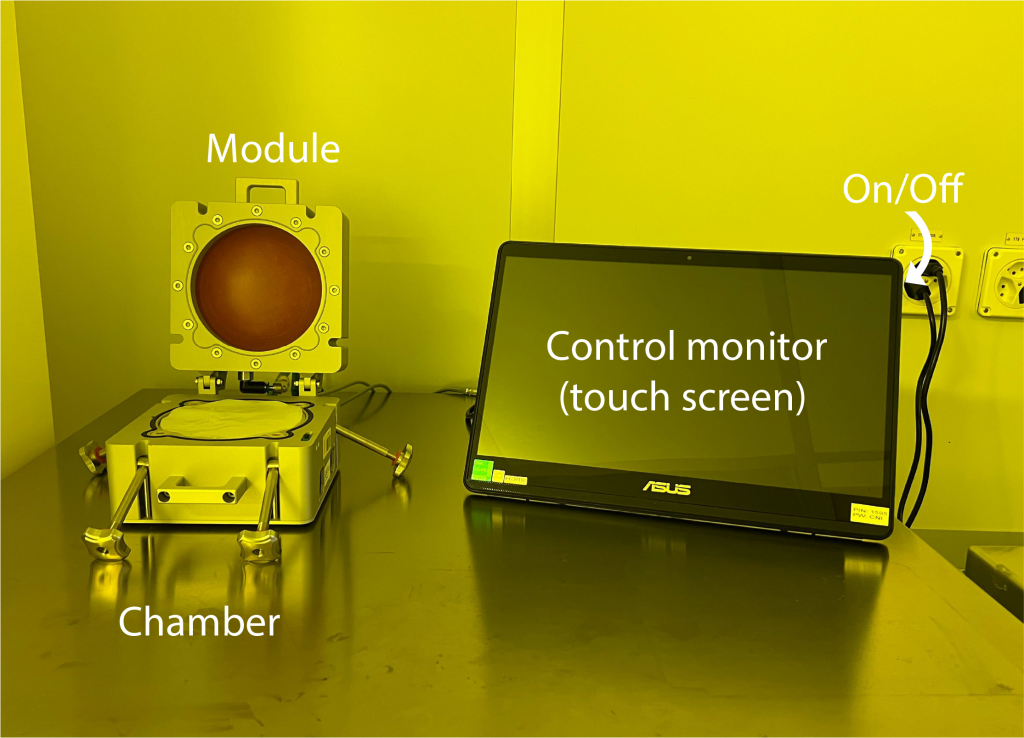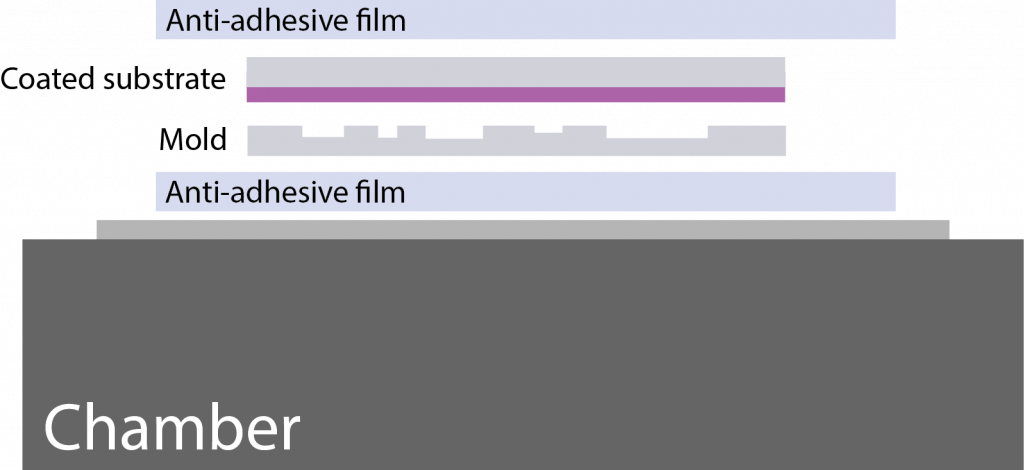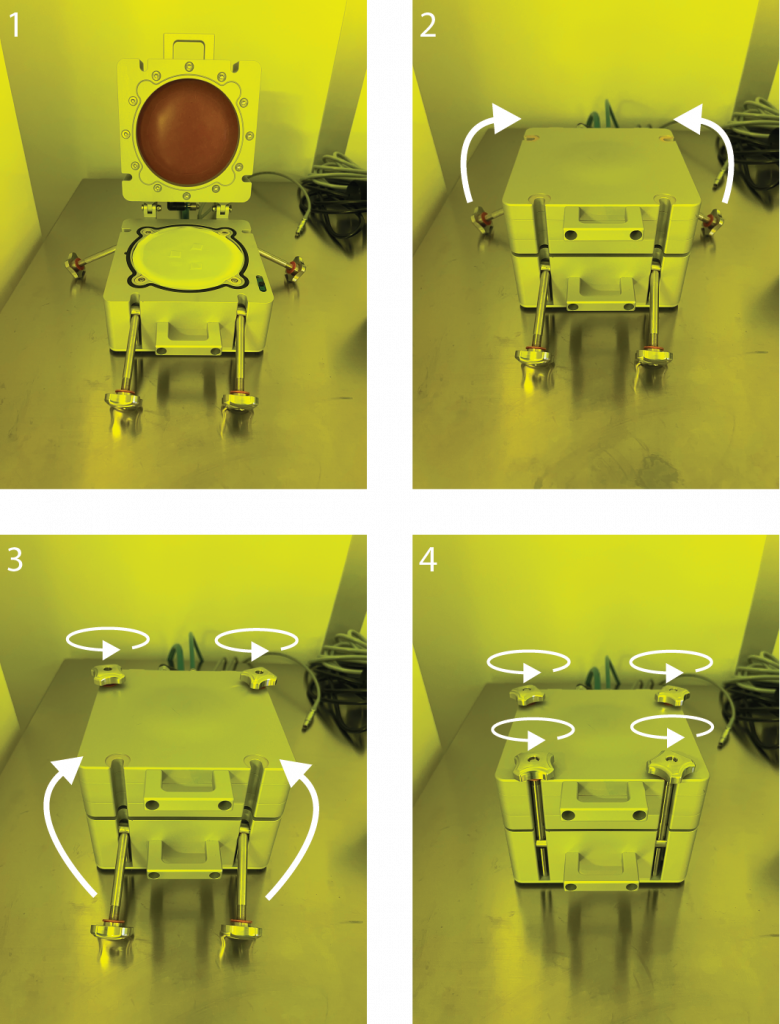The CNI v3.0 is a desktop nanoimprint tool for easy replication of micro and nanoscale structures on wafer up to 100mm.
Features :
- Thermal NIL up to 250°C
- UV NIL @365nm or 405nm (with temperature up to 200°C)
- Imprint in vacuum (~1mbar)
- Uniform pressure (up to 6.5bar) applied trough a membrane
- Replicable structures : ~40nm up to 100um
Table of content
I . Parts and functions

Module
Exchangeable module / lid which is changed by the staff according to user requests. Three options are available :
- High temperature (up to 250°C, red membrane)
- UV @365nm (up to 200°C, white membrane)
- UV @405nm (up to 200°C, white membrane)
During the process, the membrane expands on the sample/mold to apply a homogeneous pressure up to 6 bars.
Chamber
It contains the removable heating element (RHE) and fans to cool down, and it allows to draw vacuum.
Control monitor
A touch-screen computer to edit and start a recipe.
II. Operating instructions
Place in the center of the chamber your sample and mold under 2 sheets of anti-adhesive film as shown in the picture below. If the stamp and substrate are of different sizes, the smaller part must be at the top.

Close the lid (module) and raise the two screws from the back (you will need to hold the washer below the bolt) and tighten them. Now raise the two front ones and tighten them as well. Then tighten again all the screws that would have gotten loose (back, front, back,…).

Turn on the computer and login with the user/password from the sticker on the screen (bottom right). Open CNI v3 and follow the instructions from the manual below to create/edit and start a recipe.
When the process is finished, you can open the lid (module) and get back your sample and mold.
Be careful, the chamber and your sample/mold might still be hot !!!
III. Process
We recommend the library of processes NAPANIL by Prof. Helmut Shift (PSI) to find more information on how to perform nanoimprint. You can download it here.
Bonding chips
No in depth characterization has been performed, but good results have been obtained for bonding chips with BCB cyclotene 3022-35 (spin coated on Z13 – Sawatec LSM-250 MISC). Both surfaces to be bonded were coated.
NILT recipe (High temperature module) :
- Vacuum
- Heat up to 50°C (5°C/min)
- Apply maximum pressure (i.e. 7bar @ 1bar/min)
- Heat up to 250°C (4°C/min)
- Hold for 120min
- Cool down to 35°C (2°C/min)
- Release pressure